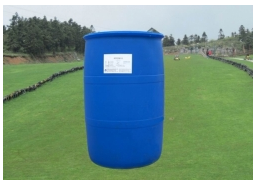The metabolic process of fermentation material is a series of biochemical reactions. Due to the small size of bacteria, the rapid biocatalytic reaction, the difficulty of reaction tracking and the limitation of experimental equipment, the development of basic research on microbial material metabolism has been restricted to a great extent. It takes quite a long time to completely understand the material metabolism process of a strain For example, the research of glutamic acid fermentation and metabolism process has gone through decades of time. At present, with the rapid development of biotechnology, experimental technology and equipment continue to update, research cycle will continue to shorten. The explanation of the mechanism that surfactant can be used as a fermentation promoter is based on the premise of fully understanding the material metabolism of bacteria fermentation, with the help of biological upstream technology, such as genetic engineering and cell engineering, in order to solve this theoretical problem essentially, and then to solve the practical problems of high cost and low production in the current fermentation industry Put forward practical solutions.

When surfactants are added into the fermentation system, whether as defoamer or promoter, to the end of fermentation process, surfactants will still dissolve in the fermentation mother liquor, making the components of fermentation mother liquor more complex, which may affect the process conditions for the separation and purification of metabolites from it. However, this effect may be beneficial or unfavorable, depending directly on the nature of the surfactant. It is well known that some surfactants can be used as flocculants, such as polyacrylamide, polyvinyl alcohol, sodium dodecyl xanthate, etc. If this kind of surfactant is added to the system as a fermentation promoter, it may be beneficial to the separation rate of metabolites. If the surfactant has solubilization effect, the effect is opposite.
At present, there are few reports about surfactant adding into fermentation system as flocculant. Only the concentration of metabolites in fermentation mother liquor is studied when surfactant is added into fermentation system as promoter, and other aspects of research are not involved. Therefore, in order to improve the efficiency of fermentation, it is necessary to pay more attention to the study of the yield of flocculant.
From the classification of surfactants, it can be seen that there are many kinds of surfactants: according to the hydrophilic groups, they are divided into carboxylate, sulfate, quaternary ammonium salt, PEO derivative, lactone, etc.; some researchers can divide them into ionic type and non-ionic type according to the ionic property of their molecular composition; there are also various classifications according to their water solubility, chemical structure characteristics and raw material sources method. At present, it is generally recognized that the classification method is based on the nature of dissociation, which can be divided into four categories: anionic surfactants, cationic surfactants, amphoteric surfactants and non-ionic surfactants. Under the condition that the mechanism of surfactant promoting fermentation is not clear, the surfactant needed in experiment and production can not be selected.
Many surfactants have certain bactericidal function because of their structural characteristics. For example, geramine is a cationic surfactant with good bactericidal effect. But the bactericidal function is obvious only when the concentration of surfactant reaches a certain critical value. Generally speaking, the toxicity of cationic surfactants is greater than that of nonionic surfactants, and the toxicity and bactericidal power of anionic surfactants are between the two. The surfactant as a fermentation promoter, is to ensure the normal growth of bacteria under the premise of improving the yield of fermentation products. This requires that the amount of surfactant added should be less than the critical value of bactericidal concentration of various surfactants. However, the research on this critical value is insufficient. The concentration range of surfactants selected is usually 0.5-10 g / L according to the preliminary test or personal experience. In such a wide concentration range, it is easy to ignore the promotion effect of some surfactants, and no rigorous conclusion can be drawn.